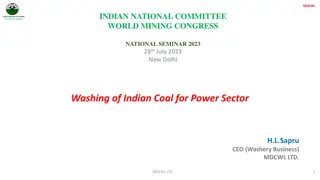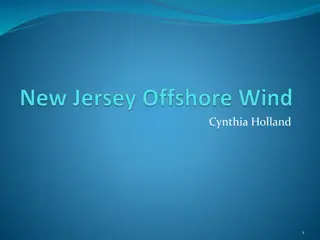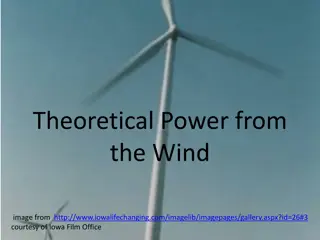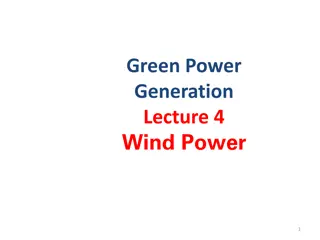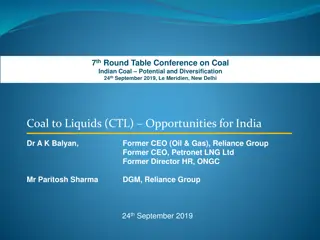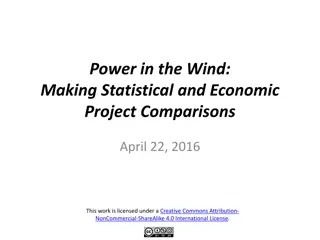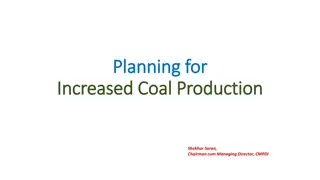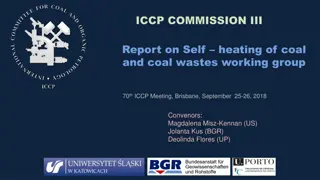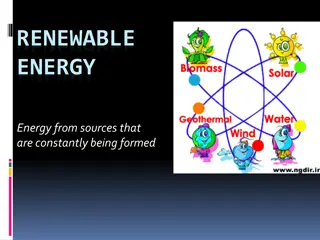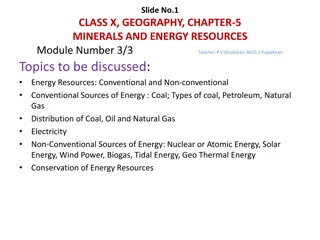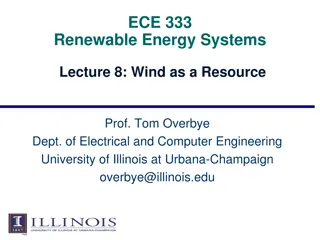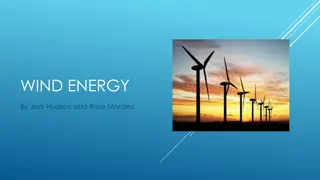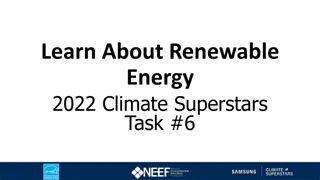Wind Energy: A Sustainable Alternative to Coal Generation
Wind energy emerges as a competitive and environmentally friendly alternative to coal generation, offering numerous advantages such as reduced health costs, lower emissions of pollutants like sulfur dioxide and mercury, and potential smart grid integration. The Department of Energy envisions wind energy contributing up to 20% of the nation's electricity by 2030.
Download Presentation

Please find below an Image/Link to download the presentation.
The content on the website is provided AS IS for your information and personal use only. It may not be sold, licensed, or shared on other websites without obtaining consent from the author.If you encounter any issues during the download, it is possible that the publisher has removed the file from their server.
You are allowed to download the files provided on this website for personal or commercial use, subject to the condition that they are used lawfully. All files are the property of their respective owners.
The content on the website is provided AS IS for your information and personal use only. It may not be sold, licensed, or shared on other websites without obtaining consent from the author.
E N D
Presentation Transcript
Wind energy is competitive with fossil fuels. It offers many environmental advantages compared to its major rival coal generation. source: http://www.nrel.gov/docs/fy05osti/37602.pdf.
Burning coal causes roughly $60 billion a year in health cost, mostly because of thousands of premature deaths from air pollution according to the National Academy of Sciences. Damages average $.032 /KWhr source: http://www.nytimes.com/2009/10/20/science/ earth/20fossil.html?_r=2&scp=6&sq=coal%20 pollution&st=cse
10,000 tons of sulfur dioxide (SO2), which causes acid rain 10,200 tons of nitrogen oxide (NOx). NOx leads to formation of ozone (smog). 720 tons of carbon monoxide (CO) 220 tons of hydrocarbons, volatile organic compounds (VOC), which form ozone. source: http://www.ucsusa.org/clean_energy/coalvswind/c02c.h tml
170 pounds of mercury, leads to neurological damage. 225 pounds of arsenic 114 pounds of lead, 4 pounds of cadmium, and trace amounts of uranium. 3,700,000 tons of carbon dioxide (CO2) --as much carbon dioxide as cutting down 161 million trees. Carbon dioxide is a global warming gas. source: http://www.ucsusa.org/clean_energy/coalvswind/c02c.h tml
Further information on the environmental effects of using coal to generate electricity can be found at http://www.ucsusa.org/clean_energy/coalvsw ind/c01.htmland http://en.wikipedia.org/wiki/Environmental_e ffects_of_coal
Wind suffers from being most available when electricity is least in demand (winter & nights). Smart grid applications may make wind more desirable such as charging an electric car during the evening hours
DOE (Department of Energy) has determined that it is feasible that 20% of the nation s electrical energy could be generated by wind by the year 2030. See 20% Wind Energy by 2030: Increasing Wind Energy's Contribution to U.S. Electricity Supply at http://www1.eere.energy.gov/windandhyd ro/pdfs/41869.pdf.




